-
 Bitcoin
Bitcoin $107,443.3008
-1.17% -
 Ethereum
Ethereum $2,494.2503
-0.63% -
 Tether USDt
Tether USDt $1.0003
0.00% -
 XRP
XRP $2.2496
2.23% -
 BNB
BNB $658.7569
0.63% -
 Solana
Solana $154.9826
1.94% -
 USDC
USDC $1.0000
0.01% -
 TRON
TRON $0.2799
1.07% -
 Dogecoin
Dogecoin $0.1659
-1.78% -
 Cardano
Cardano $0.5745
0.25% -
 Hyperliquid
Hyperliquid $39.7005
0.13% -
 Bitcoin Cash
Bitcoin Cash $519.5989
3.78% -
 Sui
Sui $2.7874
-2.40% -
 Chainlink
Chainlink $13.3762
-1.69% -
 UNUS SED LEO
UNUS SED LEO $9.0784
-0.64% -
 Avalanche
Avalanche $17.9846
-2.81% -
 Stellar
Stellar $0.2390
-0.06% -
 Toncoin
Toncoin $2.9028
0.25% -
 Shiba Inu
Shiba Inu $0.0...01147
-2.17% -
 Litecoin
Litecoin $86.6956
-1.27% -
 Hedera
Hedera $0.1508
-0.50% -
 Monero
Monero $322.6222
3.26% -
 Polkadot
Polkadot $3.4124
-2.99% -
 Dai
Dai $0.9999
0.00% -
 Bitget Token
Bitget Token $4.5434
-1.97% -
 Ethena USDe
Ethena USDe $1.0002
0.00% -
 Uniswap
Uniswap $7.1562
-2.61% -
 Aave
Aave $275.8830
-1.02% -
 Pepe
Pepe $0.0...09790
-4.04% -
 Pi
Pi $0.5018
-5.09%
How to calculate the forced liquidation price of OKX contract? How much position loss will be triggered?
Calculate OKX contract forced liquidation price using entry price, position size, and maintenance margin rate; potential losses depend on market price at liquidation.
May 05, 2025 at 05:35 am
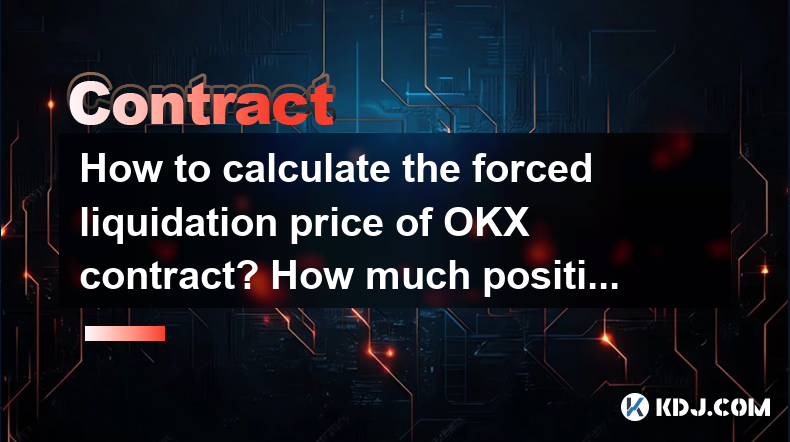
How to Calculate the Forced Liquidation Price of OKX Contract? How Much Position Loss Will Be Triggered?
Understanding the forced liquidation price of a futures contract on OKX and the potential position loss that could be triggered is crucial for any trader. This article will delve into the specifics of calculating the forced liquidation price and exploring the potential losses that may occur.
Understanding Forced Liquidation on OKX
Forced liquidation is a mechanism employed by OKX to mitigate the risk of significant losses for both the trader and the platform. When the market moves against a trader's position, and the margin in the account is insufficient to cover potential losses, OKX will automatically close the position to prevent further loss. The price at which this happens is known as the forced liquidation price.
Calculating the Forced Liquidation Price
To calculate the forced liquidation price for a futures contract on OKX, you need to consider several factors, including the entry price, the position size, and the maintenance margin rate. Here is a step-by-step guide on how to calculate it:
- Identify the entry price: This is the price at which you entered the futures contract.
- Determine the position size: This is the total number of contracts you have bought or sold.
- Understand the maintenance margin rate: OKX sets a maintenance margin rate that is necessary to keep the position open. This rate can vary depending on the specific contract and market conditions.
For a long position, the forced liquidation price can be calculated as follows:
[ \text{Forced Liquidation Price (Long)} = \text{Entry Price} \times (1 - \text{Maintenance Margin Rate}) - \text{Open Unrealized P&L per Contract} ]
For a short position, the formula is:
[ \text{Forced Liquidation Price (Short)} = \text{Entry Price} \times (1 + \text{Maintenance Margin Rate}) + \text{Open Unrealized P&L per Contract} ]
Example Calculation of Forced Liquidation Price
Let's walk through an example to illustrate how to calculate the forced liquidation price for both long and short positions.
- Long Position Example:
- Entry Price: $50,000
- Position Size: 10 contracts
- Maintenance Margin Rate: 0.5% (or 0.005)
- Open Unrealized P&L per Contract: -$200
Using the formula:
[ \text{Forced Liquidation Price (Long)} = 50,000 \times (1 - 0.005) - 200 ]
[ \text{Forced Liquidation Price (Long)} = 50,000 \times 0.995 - 200 ]
[ \text{Forced Liquidation Price (Long)} = 49,750 - 200 ]
[ \text{Forced Liquidation Price (Long)} = 49,550 ]
- Short Position Example:
- Entry Price: $50,000
- Position Size: 10 contracts
- Maintenance Margin Rate: 0.5% (or 0.005)
- Open Unrealized P&L per Contract: $200
Using the formula:
[ \text{Forced Liquidation Price (Short)} = 50,000 \times (1 + 0.005) + 200 ]
[ \text{Forced Liquidation Price (Short)} = 50,000 \times 1.005 + 200 ]
[ \text{Forced Liquidation Price (Short)} = 50,250 + 200 ]
[ \text{Forced Liquidation Price (Short)} = 50,450 ]
Position Loss Triggered by Forced Liquidation
When a position is forcibly liquidated, the trader may incur a loss. The extent of this loss depends on the difference between the forced liquidation price and the actual market price at the time of liquidation. Here’s how to estimate the potential loss:
- Calculate the difference between the forced liquidation price and the market price at the time of liquidation.
- Multiply this difference by the position size to determine the total loss in the contract's underlying asset.
- Convert the loss from the contract's underlying asset to the account's base currency if necessary.
For example, if the forced liquidation price for a long position is $49,550 and the market price at the time of liquidation is $49,000, the loss per contract would be:
[ \text{Loss per Contract} = 49,550 - 49,000 = 550 ]
If the position size is 10 contracts, the total loss would be:
[ \text{Total Loss} = 550 \times 10 = 5,500 ]
Factors Affecting Forced Liquidation Price
Several factors can influence the forced liquidation price, including:
- Volatility: High market volatility can increase the likelihood of forced liquidation as prices can move rapidly.
- Leverage: Higher leverage increases the risk of forced liquidation because it amplifies potential losses.
- Market Conditions: Sudden market movements can trigger forced liquidations if they push the market price close to the forced liquidation price.
- Position Size: Larger positions require more margin and can lead to a lower forced liquidation price for long positions and a higher forced liquidation price for short positions.
How to Avoid Forced Liquidation
To minimize the risk of forced liquidation, traders can take several precautionary measures:
- Monitor Margin Levels: Regularly check the margin levels to ensure they are above the maintenance margin requirement.
- Use Stop-Loss Orders: Implementing stop-loss orders can help limit potential losses and prevent forced liquidation.
- Adjust Leverage: Lowering leverage can reduce the risk of forced liquidation by decreasing the potential for large losses.
- Diversify Positions: Spreading investments across different assets can mitigate the impact of adverse price movements on a single position.
FAQs
Q1: Can the forced liquidation price change after the position is opened?
Yes, the forced liquidation price can change due to factors such as changes in the maintenance margin rate, fluctuations in the unrealized profit and loss, and adjustments in the position size.
Q2: What happens if the market price reaches the forced liquidation price but then rebounds quickly?
If the market price briefly touches the forced liquidation price but then rebounds, the position may still be liquidated if the system processes the liquidation during that brief moment. However, if the price rebounds before the liquidation is executed, the position might remain open.
Q3: Is there a way to manually close a position before it reaches the forced liquidation price?
Yes, traders can manually close their positions at any time before the forced liquidation price is reached by executing a market or limit order to sell or buy back the contracts.
Q4: How can I find out the current maintenance margin rate for a specific contract on OKX?
You can find the current maintenance margin rate for a specific contract on OKX by checking the contract specifications on the OKX platform, which are usually available in the trading interface or the contract details section.
Disclaimer:info@kdj.com
The information provided is not trading advice. kdj.com does not assume any responsibility for any investments made based on the information provided in this article. Cryptocurrencies are highly volatile and it is highly recommended that you invest with caution after thorough research!
If you believe that the content used on this website infringes your copyright, please contact us immediately (info@kdj.com) and we will delete it promptly.
- Rare Find: The 2p Coin Error Worth £1,000!
- 2025-07-01 14:30:12
- Bitcoin Price Rollercoaster: Trump vs. Musk, and What It Means for Your Crypto
- 2025-07-01 14:30:12
- German Banks, Crypto Trading, and FOMO: A New Era?
- 2025-07-01 14:35:12
- XRPL, Token Tracker, and XRP Holders: Navigating Security, Innovation, and Future Wealth
- 2025-07-01 15:10:12
- ETF Approval, Crypto, and Institutional Investment: A New Era?
- 2025-07-01 15:10:12
- Bitcoin Breakout Incoming? July Patterns Hint at Historic Rally!
- 2025-07-01 14:50:12
Related knowledge
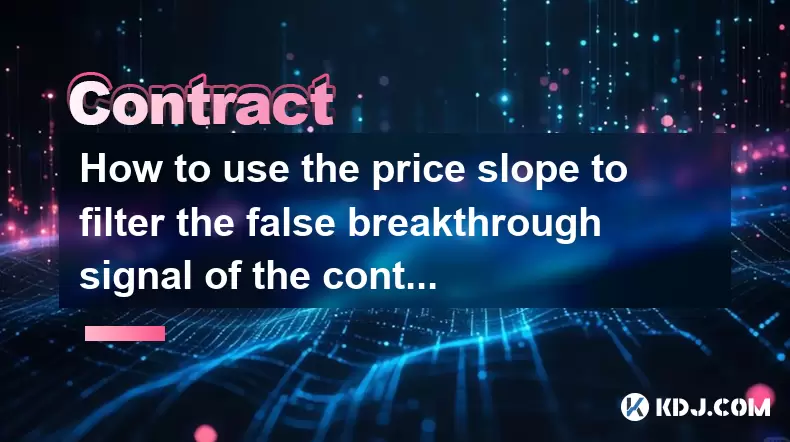
How to use the price slope to filter the false breakthrough signal of the contract?
Jun 20,2025 at 06:56pm
Understanding the Concept of Price Slope in Contract TradingIn contract trading, especially within cryptocurrency derivatives markets, price slope refers to the rate at which the price changes over a specific time period. It helps traders assess the strength and sustainability of a trend. A steep slope may indicate strong momentum, while a shallow slope...
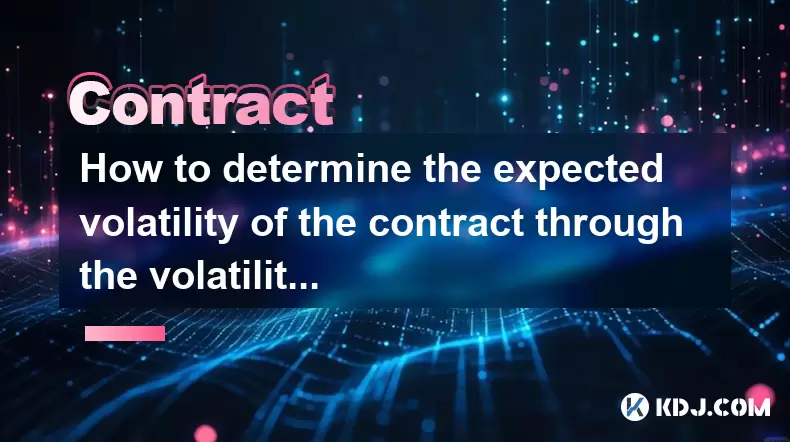
How to determine the expected volatility of the contract through the volatility cone?
Jun 19,2025 at 12:28pm
Understanding the Basics of Volatility in Cryptocurrency ContractsIn the realm of cryptocurrency trading, volatility is a key metric that traders use to assess potential risk and reward. When dealing with futures contracts, understanding how volatile an asset might become over time is crucial for position sizing, risk management, and strategy developmen...
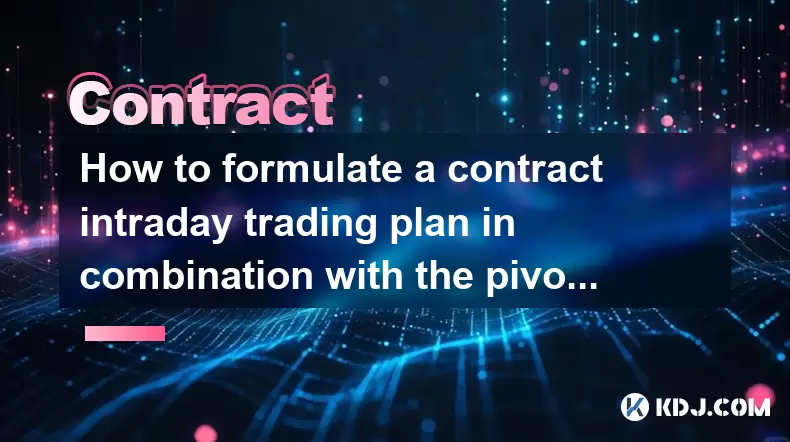
How to formulate a contract intraday trading plan in combination with the pivot point system?
Jun 21,2025 at 03:42pm
Understanding the Basics of Pivot Points in Cryptocurrency TradingPivot points are technical analysis tools used by traders to identify potential support and resistance levels. These levels are calculated using the previous day's high, low, and closing prices. In the context of cryptocurrency trading, where markets operate 24/7, pivot points help trader...
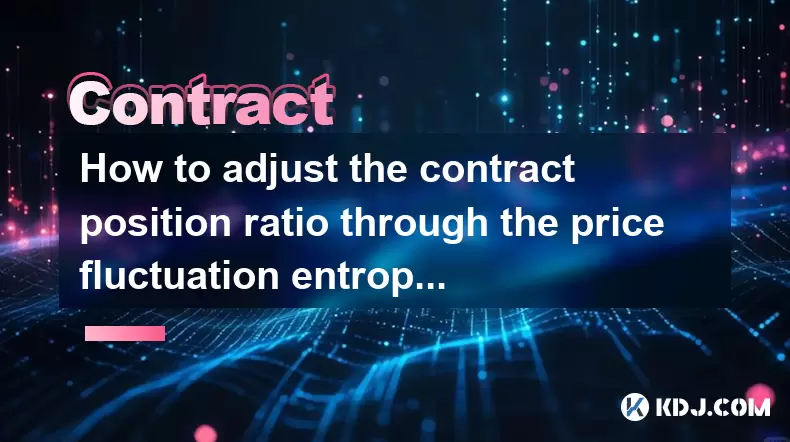
How to adjust the contract position ratio through the price fluctuation entropy?
Jun 22,2025 at 11:42am
Understanding Price Fluctuation Entropy in Cryptocurrency ContractsIn the world of cryptocurrency futures trading, price fluctuation entropy is a relatively new concept used to measure market volatility and uncertainty. It derives from information theory, where entropy refers to the degree of randomness or unpredictability in a system. In crypto contrac...
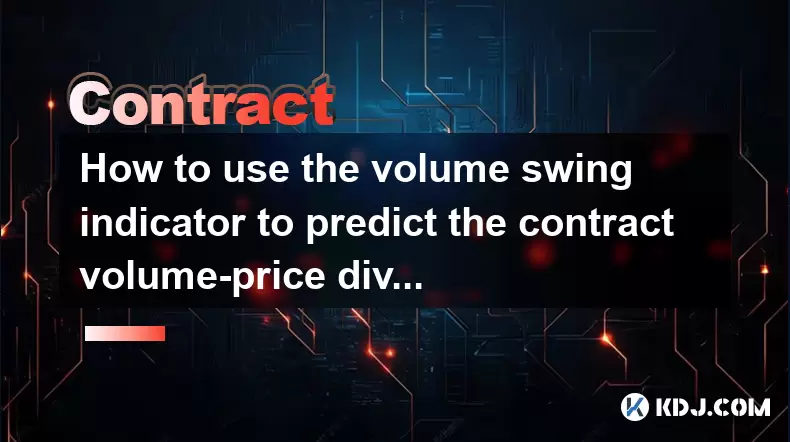
How to use the volume swing indicator to predict the contract volume-price divergence?
Jun 18,2025 at 11:42pm
Understanding the Volume Swing IndicatorThe volume swing indicator is a technical analysis tool used primarily in cryptocurrency trading to evaluate changes in volume over time. Unlike price-based indicators, this metric focuses solely on trading volume, which can provide early signals about potential market reversals or continuations. The key idea behi...
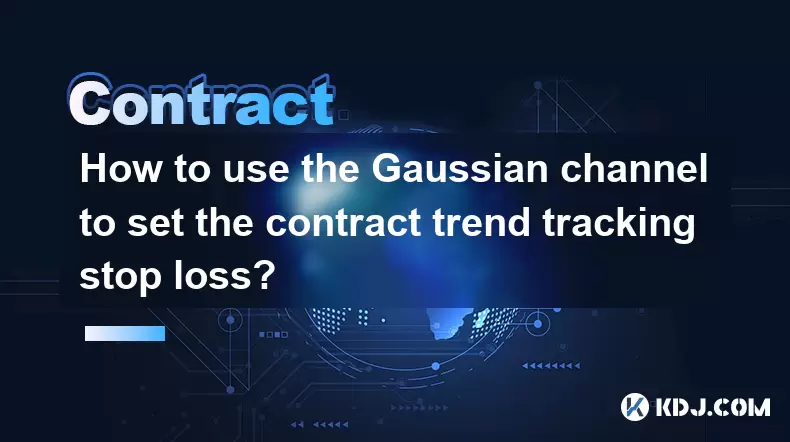
How to use the Gaussian channel to set the contract trend tracking stop loss?
Jun 18,2025 at 09:21pm
Understanding the Gaussian Channel in Cryptocurrency TradingThe Gaussian channel is a technical indicator used primarily in financial markets, including cryptocurrency trading, to identify trends and potential reversal points. It is based on statistical principles derived from the normal distribution, commonly known as the Gaussian distribution or bell ...

How to use the price slope to filter the false breakthrough signal of the contract?
Jun 20,2025 at 06:56pm
Understanding the Concept of Price Slope in Contract TradingIn contract trading, especially within cryptocurrency derivatives markets, price slope refers to the rate at which the price changes over a specific time period. It helps traders assess the strength and sustainability of a trend. A steep slope may indicate strong momentum, while a shallow slope...

How to determine the expected volatility of the contract through the volatility cone?
Jun 19,2025 at 12:28pm
Understanding the Basics of Volatility in Cryptocurrency ContractsIn the realm of cryptocurrency trading, volatility is a key metric that traders use to assess potential risk and reward. When dealing with futures contracts, understanding how volatile an asset might become over time is crucial for position sizing, risk management, and strategy developmen...

How to formulate a contract intraday trading plan in combination with the pivot point system?
Jun 21,2025 at 03:42pm
Understanding the Basics of Pivot Points in Cryptocurrency TradingPivot points are technical analysis tools used by traders to identify potential support and resistance levels. These levels are calculated using the previous day's high, low, and closing prices. In the context of cryptocurrency trading, where markets operate 24/7, pivot points help trader...

How to adjust the contract position ratio through the price fluctuation entropy?
Jun 22,2025 at 11:42am
Understanding Price Fluctuation Entropy in Cryptocurrency ContractsIn the world of cryptocurrency futures trading, price fluctuation entropy is a relatively new concept used to measure market volatility and uncertainty. It derives from information theory, where entropy refers to the degree of randomness or unpredictability in a system. In crypto contrac...

How to use the volume swing indicator to predict the contract volume-price divergence?
Jun 18,2025 at 11:42pm
Understanding the Volume Swing IndicatorThe volume swing indicator is a technical analysis tool used primarily in cryptocurrency trading to evaluate changes in volume over time. Unlike price-based indicators, this metric focuses solely on trading volume, which can provide early signals about potential market reversals or continuations. The key idea behi...

How to use the Gaussian channel to set the contract trend tracking stop loss?
Jun 18,2025 at 09:21pm
Understanding the Gaussian Channel in Cryptocurrency TradingThe Gaussian channel is a technical indicator used primarily in financial markets, including cryptocurrency trading, to identify trends and potential reversal points. It is based on statistical principles derived from the normal distribution, commonly known as the Gaussian distribution or bell ...
See all articles

























































































